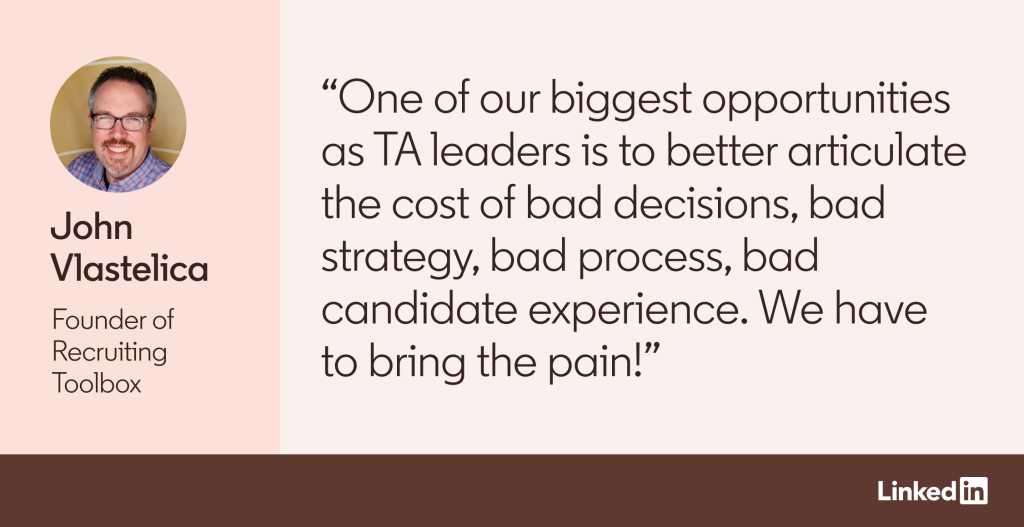If seeing compensation so high in the first chart made you nervous, here’s where you can take a small sigh of relief. Yes, pay will always be important, but the people who join small businesses are less likely to make it one of their deciding factors, compared to their enterprise peers. If you can’t beat the competition on compensation, you’re not automatically out of the running.
People at smaller businesses are also less likely to prioritize opportunities for career growth within the company. Now, this one might make you do a mental double take: Smaller businesses can be great for advancing your career, what gives?
The critical words here are “within the company.” Compared to the complex hierarchy and job titles found in larger corporations, SMBs typically have simpler organizational structures with fewer and less specific titles. If a candidate is super eager to “rise through the ranks,” they’ll probably end up at an enterprise anyway.
But smaller businesses can and should emphasize how candidates can advance their careers by developing new skills. Working at a smaller company often involves “wearing multiple hats” — roles that would probably fall under separate job titles in a bigger company. For example, your chief marketing officer might simultaneously serve as your chief brand ambassador and head of public relations.
While that might translate into fewer promotions and less room to rise up the ranks, it also means more opportunities to develop valuable new skills. If you’re hiring for a smaller business, that’s a powerful way to reframe the role for candidates.
Final thoughts
While your smaller business may not be able to compete with large enterprises on every front, you do have your own advantages. People who join SMBs value being part of collaborative, happy teams where they can do meaningful work. When you play up these strengths, you’re not just offering a role — you’re inviting candidates to be part of a small community where they can flourish and thrive.
Methodology
In this analysis, small and medium-size businesses are defined as those with between 1 and 1,000 employees, while large enterprises are companies with over 10,000 employees. In the LinkedIn Talent Drivers survey, members are asked to select up to five of the most important factors for them when they consider a new job, out of a list of 15 different factors. This analysis is based on over 157,000 survey responses between December 2022 and November 2023.










